Sculptural steel screen invites nature to grow around Woven House in Kent
An intricate screen designed to encourage plant growth wraps around the walls of Woven House, which British practice Giles Miller Studio has raised above a sloped site in Kent.
Located 100 metres away from Broadstairs coastline, the house is designed by Giles Miller Studio to be taken over by nature as plants grow up its perforated-steel facade.
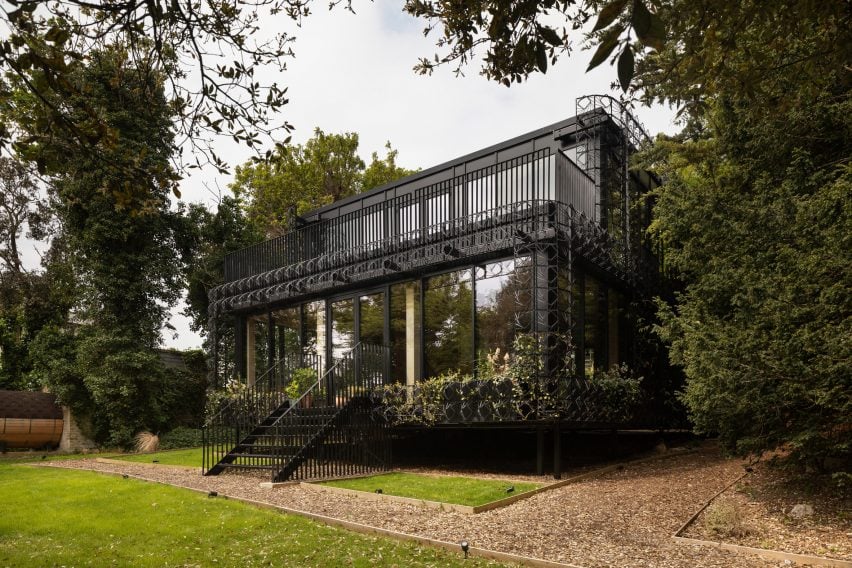
"The design approach for Woven House has been to question the relationship between the inside and outside spaces of the building, to try to enrich the experience of being in both," studio founder Giles Miller told Dezeen.
"The house breaks down barriers between the building's internal spaces and the glade of natural planting and trees that surround it, through a unique sculptural facade which invites nature to grow up the outside of the house whilst also being visible from within it."
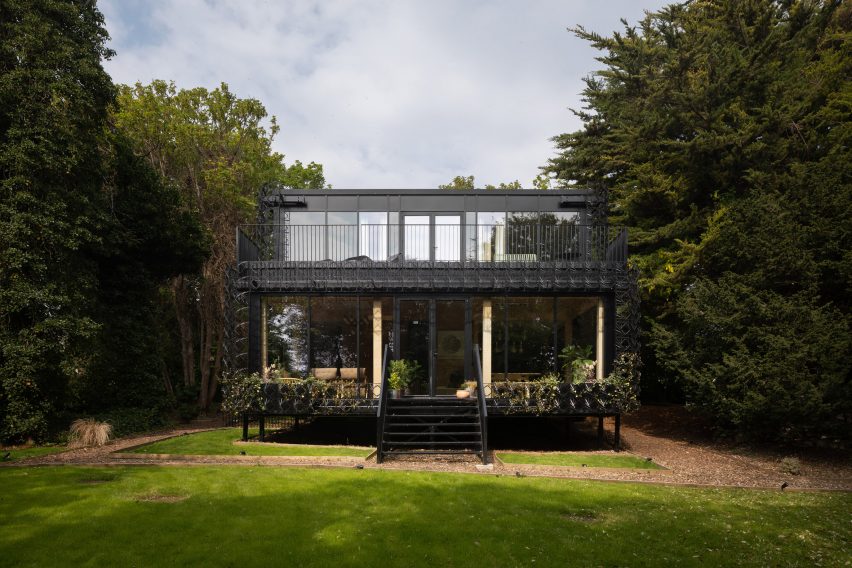
Giles Miller Studio created a repeating pattern of twisting, diamond-shaped modules for the steel facade, which is informed by rattan weavings.
The screen wraps around all four walls of the home and offers shading to the interior spaces.
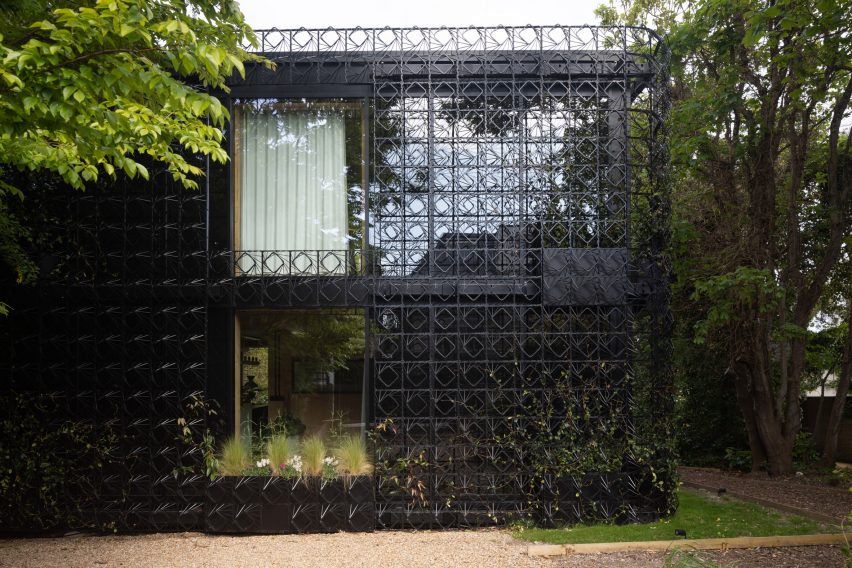
Plants including jasmine and clematis grow up the intricate facade, which is connected to the building by a support structure made from recycled acrylonitrile butadiene styrene (ABS) plastic sourced from the production of electric components.
The placement of the screen on a deep support structure offsets it from the main walls of the home and gives the plants more space to grow.
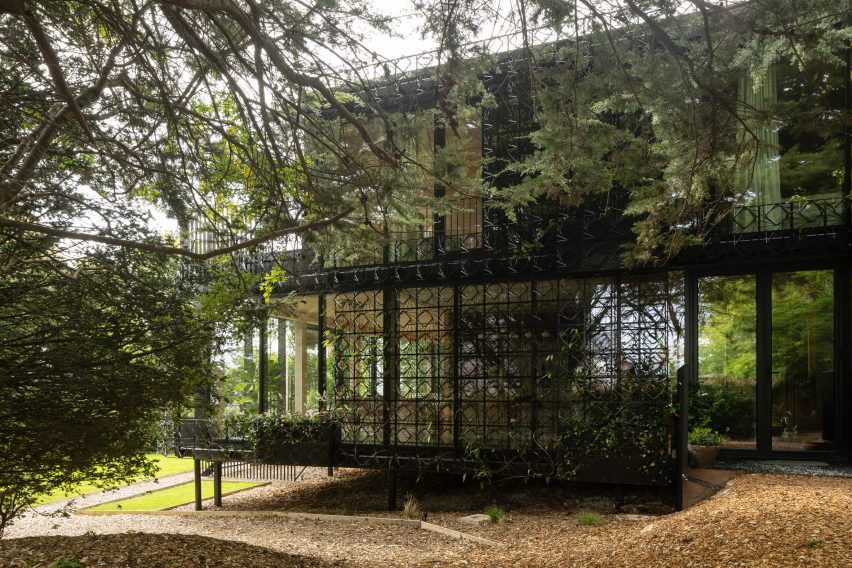
"The depth of the sculptural modules allows for increased visual permeability as well as a greater surface for the climbing plants which adorn the building to weave through," said the studio.
Behind the screen are large portions of glazing, intended to enhance the home's connection to nature by maximising the views of the surrounding plants.
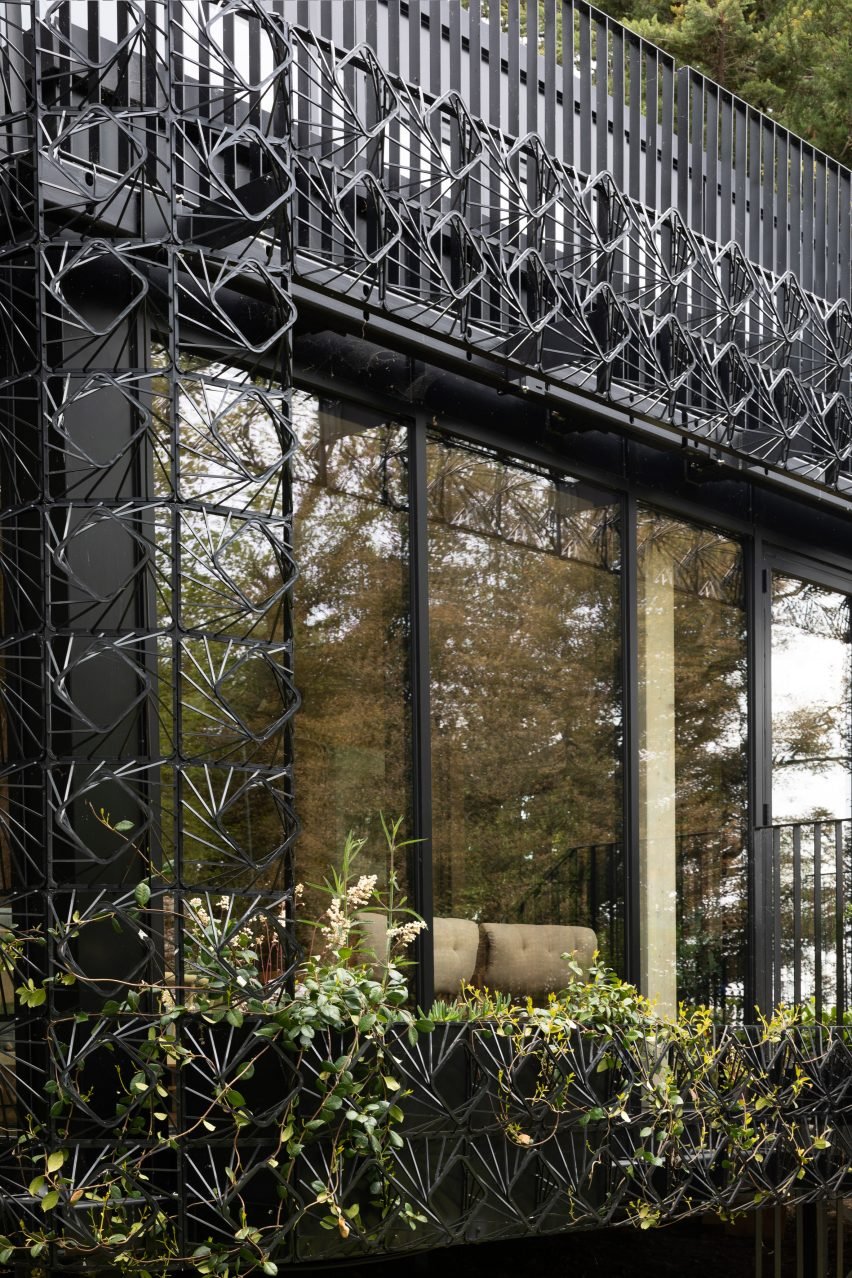
Woven House's structure is made from glued-laminated timber and cross-laminated timber (CLT), and clad in timber with a matte-black finish chosen to reflect the industrial character of the steel facade.
"The use of such extensive glazing in combination with our sculptural facade design defines the architectural approach to this building," said Miller.
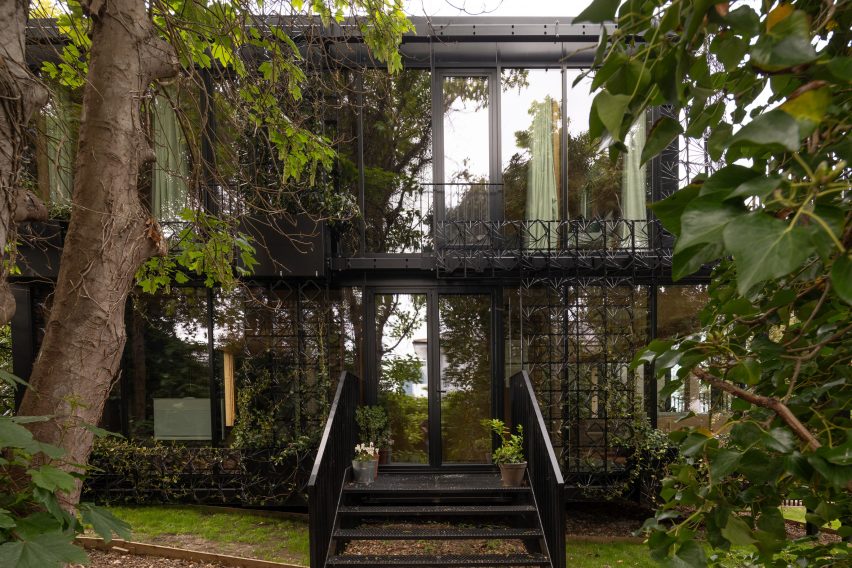
"We wanted to purify and celebrate those details with a timeless black finish which would sit in quiet contrast with the natural timber and planting that lives alongside it," Miller continued.
"There is also an industrial feel to the facade framework which feels comfortable in a matt black industrial finish."
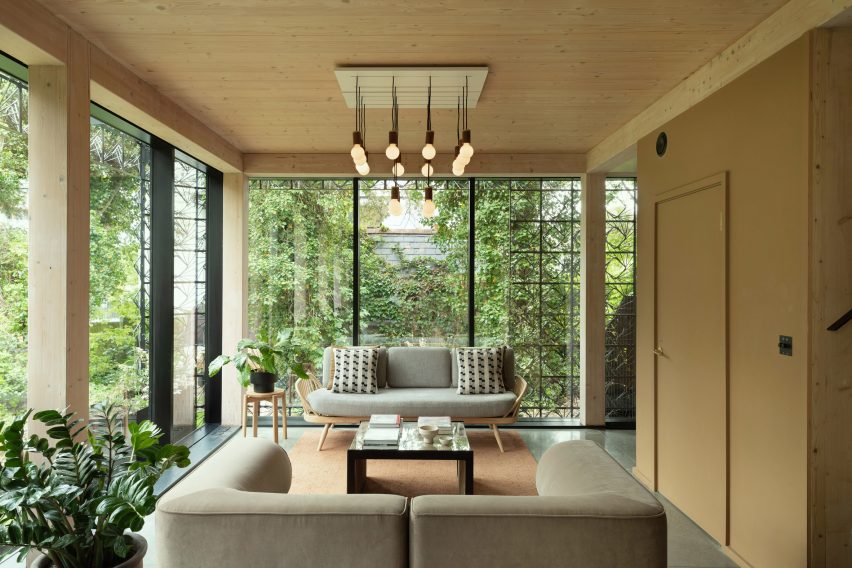
A steel staircase running to an opening in the screen leads inside the home, which is raised slightly above the sloping site on stilts. Each room has been lined with light timber panels.
The staircase guides visitors into an open living and dining space decorated with lightly-toned furnishings and hanging light fixtures.
In the kitchen, black-coloured timber joinery draws on the tones of the home's exterior, while quartz countertops and a white kitchen island help to brighten the space.
The ground floor spaces, which are organised around a central CLT core, are designed to be fully integrated but separable by floor-to-ceiling grey curtains.
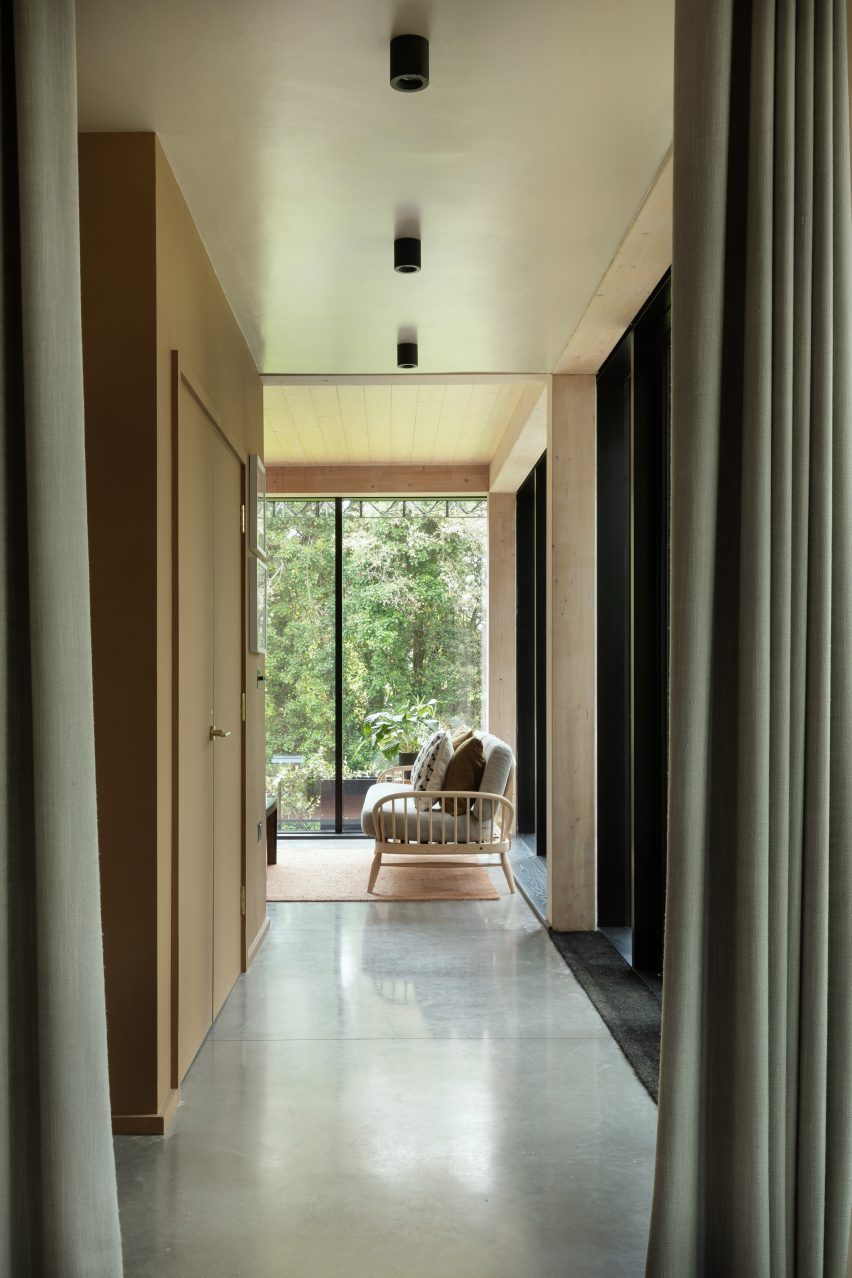
"The floor and ceilings are supported on a central utilitarian CLT structure on the ground floor which accommodates the kitchen, WC and steel staircase," said Miller.
"This central cluster is combined with external vertical pillars to create a cantilevered structure that allows the ground floor perimeter to be 90 per cent glazed and creates a free-flowing open space that runs around the whole ground floor."
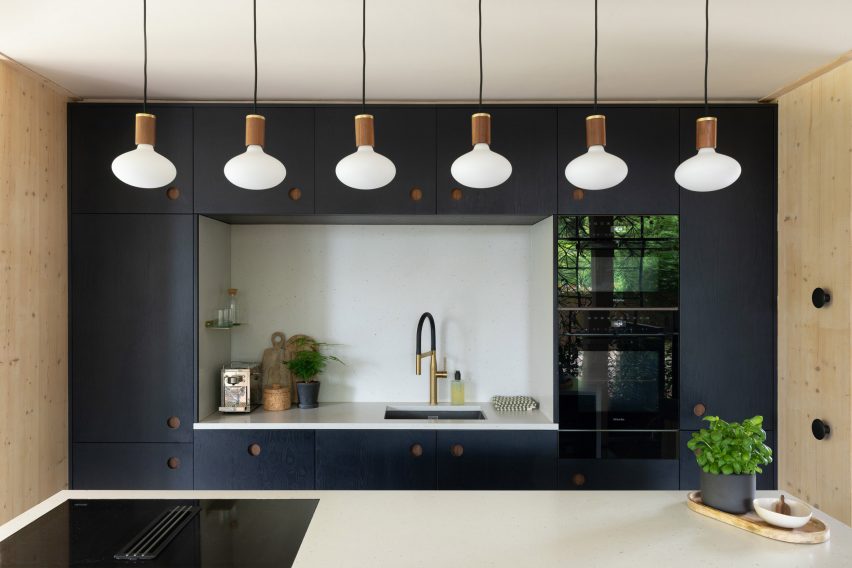
From the living space, a black-coloured timber staircase leads upstairs, where four bedrooms have been nestled into the corners of the building, giving each space maximal views of the surrounding trees.
Timber walls and ceilings help to bring a natural feel to the bedrooms, alongside floor-to-ceiling windows overlooking the treetops.
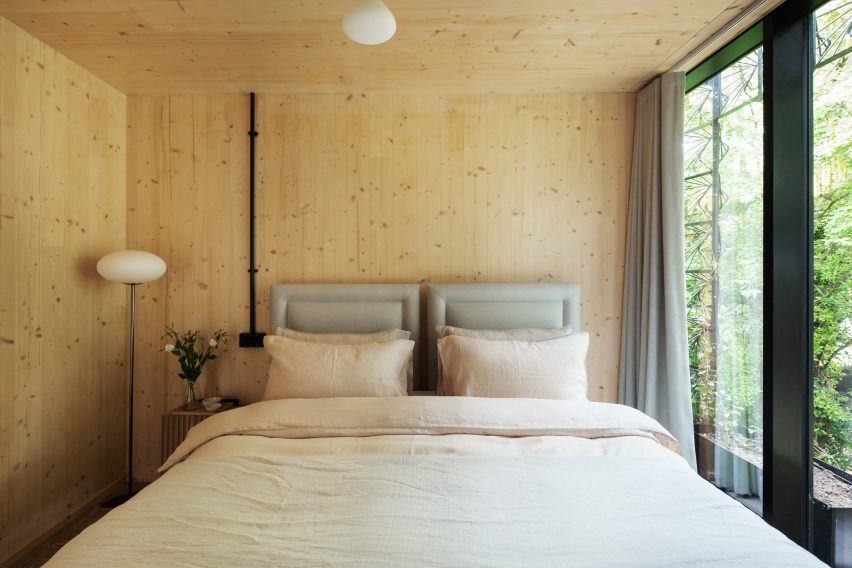
Two bathrooms branch off the central corridor, which runs between the bedrooms on either side of the building. Two of the bedrooms are also connected to ensuite bathrooms.
While Woven House marks its first residential project, British practice Giles Miller Studio has worked on a range of sculptural architectural projects since it was founded in 2011, including a recyclable two-storey pavilion designed for BBC Studios and a plywood installation presented as part of London Design Festival.
The photography is by Rachel Ferriman.